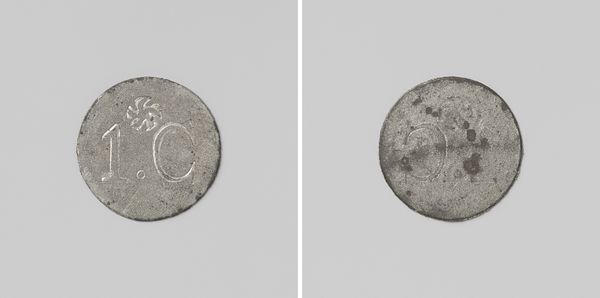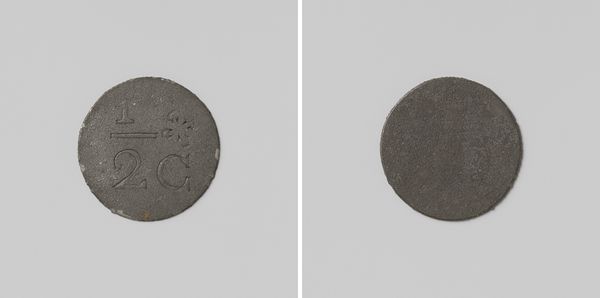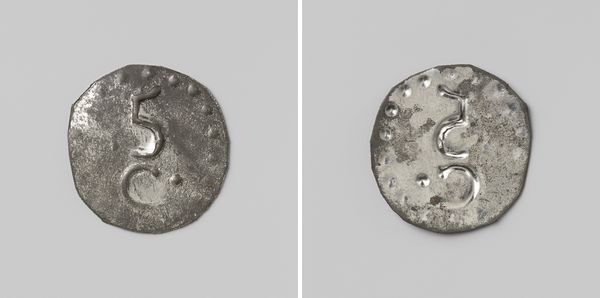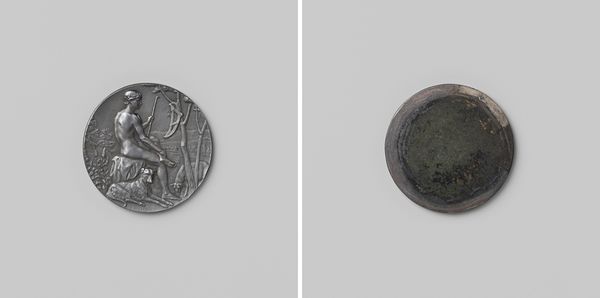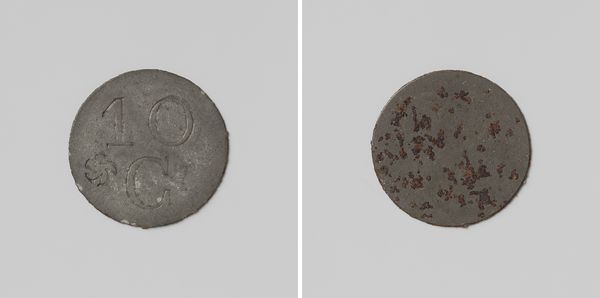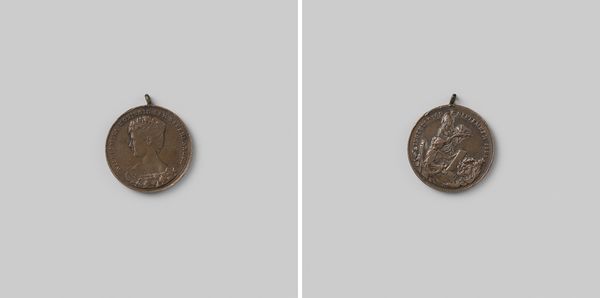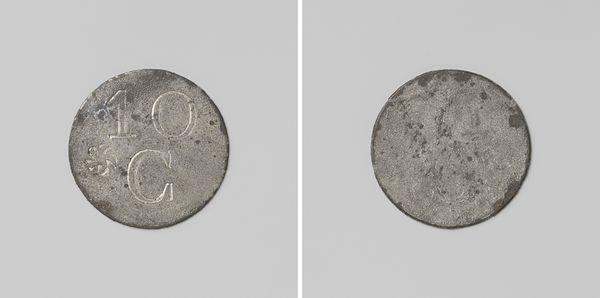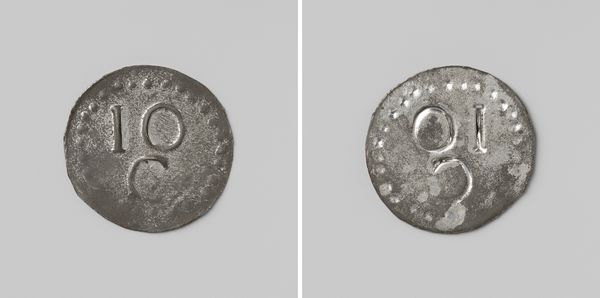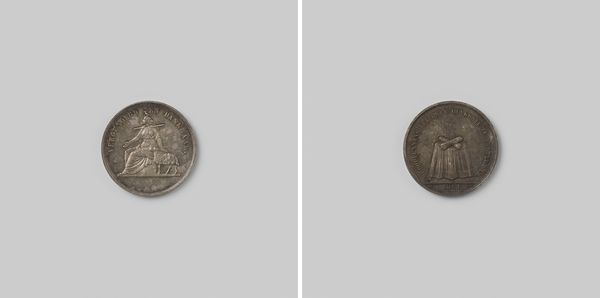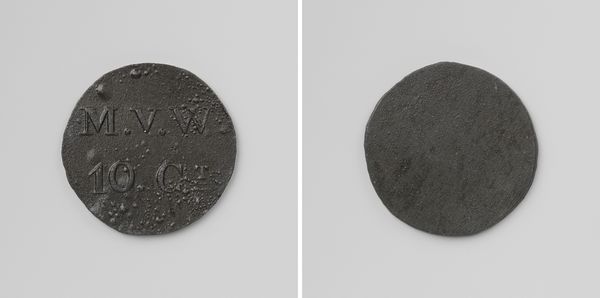
print, photography
#
portrait
#
still-life-photography
# print
#
photography
#
ancient-mediterranean
Dimensions: diameter 1.5 cm, thickness 0.1 cm, weight 1.18 gr
Copyright: Rijks Museum: Open Domain
Curator: The photograph before us captures a rather humble artifact—a 19th-century ten-cent coin, a ‘dubbeltje’ from the Dutch East Indies. It's part of the Rijksmuseum collection. Editor: Initially, I am drawn to its almost melancholic presence, a relic of a bygone era, accentuated by the muted tonality of the photograph itself. The coin seems isolated against the pale background, highlighting its worn texture. Curator: It’s fascinating to consider this small object not merely as currency, but as a symbol of colonial power and its lasting impact. How do we interpret this photograph of an anonymous coin, produced under a colonial administration, through a post-colonial lens? Editor: From a formal perspective, the circular form of the coin contrasts with the square format of the photograph, drawing my eyes into the intricate relief. The lighting accentuates the damage to the surface, and you see immediately that those imperfections speak of value and exchange over time. Curator: Exactly. Think of the forced labor and resource extraction this coin facilitated. What systems of oppression are condensed in its metal content? This image urges us to remember those whose exploitation made this coin possible. Editor: I agree it evokes a certain history, but consider too the visual harmony achieved through tonal gradations, creating an aesthetic quality, it moves it beyond documentary evidence. The symmetrical arrangement with the duplicate offers this pleasing, if somewhat sterile, feeling to its setting. Curator: True. It represents a complex intersection, as currency embodies historical trade relations that intertwine oppression with commercial interactions, creating a difficult relationship with history. Editor: Indeed. Looking at this still-life-photography, one begins to see this old coin transformed and take on an unexpected dimension beyond simply historical worth. Curator: Ultimately, this little coin compels us to think critically about value—both monetary and moral—and to question the narratives embedded in our collective history. Editor: And from an aesthetic point of view, it leaves us contemplating how a commonplace object, carefully presented, transforms into a potent symbol evoking stories about time and material presence.
Comments
No comments
Be the first to comment and join the conversation on the ultimate creative platform.
